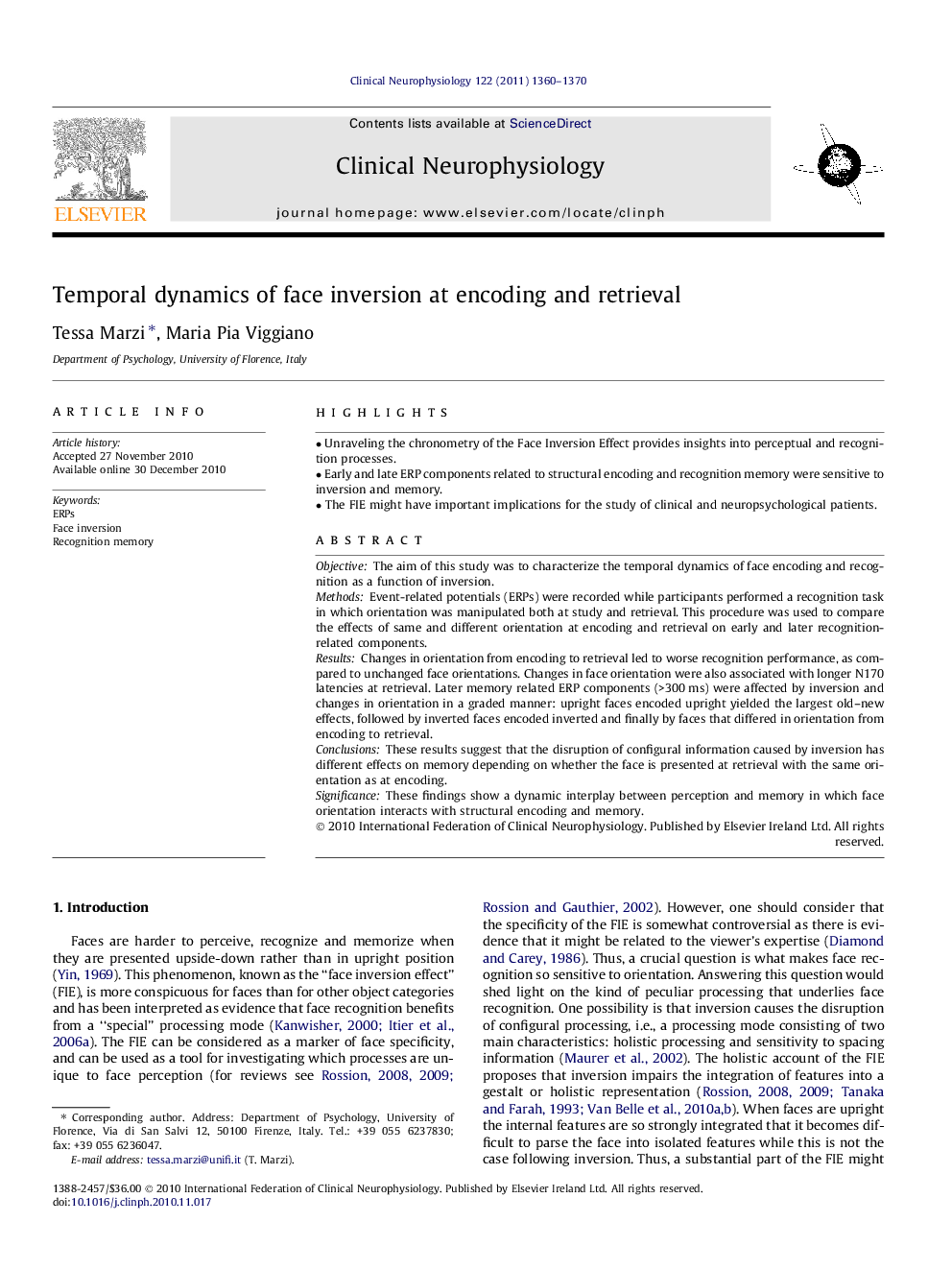| Article ID | Journal | Published Year | Pages | File Type |
|---|---|---|---|---|
| 3044780 | Clinical Neurophysiology | 2011 | 11 Pages |
ObjectiveThe aim of this study was to characterize the temporal dynamics of face encoding and recognition as a function of inversion.MethodsEvent-related potentials (ERPs) were recorded while participants performed a recognition task in which orientation was manipulated both at study and retrieval. This procedure was used to compare the effects of same and different orientation at encoding and retrieval on early and later recognition-related components.ResultsChanges in orientation from encoding to retrieval led to worse recognition performance, as compared to unchanged face orientations. Changes in face orientation were also associated with longer N170 latencies at retrieval. Later memory related ERP components (>300 ms) were affected by inversion and changes in orientation in a graded manner: upright faces encoded upright yielded the largest old–new effects, followed by inverted faces encoded inverted and finally by faces that differed in orientation from encoding to retrieval.ConclusionsThese results suggest that the disruption of configural information caused by inversion has different effects on memory depending on whether the face is presented at retrieval with the same orientation as at encoding.SignificanceThese findings show a dynamic interplay between perception and memory in which face orientation interacts with structural encoding and memory.
► Unraveling the chronometry of the Face Inversion Effect provides insights into perceptual and recognition processes. ► Early and late ERP components related to structural encoding and recognition memory were sensitive to inversion and memory. ► The FIE might have important implications for the study of clinical and neuropsychological patients.
